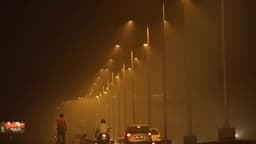Home / Environment / India's Air Quality Index Capped at 500, Experts Raise Concerns
India's Air Quality Index Capped at 500, Experts Raise Concerns
16 Nov
Summary
- India's official air quality scale caps readings at 500, despite higher real-world levels
- Experts say the 500 cap was introduced to avoid panic, but it flattens the data
- Differences in defining "hazardous" air quality between India and global standards

In November 2025, India's official air quality monitoring system continues to face scrutiny over its capping of readings at 500, despite experts saying real-world pollution levels can be significantly higher.
The National Air Quality Index, launched over a decade ago, classifies readings above 400 as "severe" and harmful to both healthy individuals and those with existing medical conditions. However, the index does not go beyond 500, a threshold that was originally set to avoid creating panic when the situation became alarmingly bad.
Gufran Beig, the founder director of SAFAR, admits that this approach effectively flattens the data, treating anything above 500 the same on official monitors. In contrast, international organizations and portals do not impose such a cap, leading to much higher numbers being reported on global platforms.
Furthermore, there are differences in how India and global entities like the World Health Organization define hazardous air quality. While the WHO considers PM2.5 levels above 15 micrograms per cubic meter as hazardous, India's threshold is set at 60 micrograms.
Experts say that comparing India's Air Quality Index to global standards can be misleading, as each country has built its own index based on local adaptability, weather, and environmental factors. The instruments used for monitoring also vary, with India relying on Beta Attenuation Monitors (BAMs) that physically measure particle mass, while other portals use sensor-based monitors.
As the debate over India's air quality data continues, the public is left uncertain about which numbers they should trust and why the government has not addressed the issue of the 500 cap on official readings.




